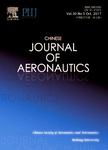A three-dimensional inverse method based on moving no-slip boundary for profiled end wall design
作者机构:School of Energy and Power EngineeringBeihang UniversityBeijing 100191China Jiangxi Research Institute of Beihang UniversityNanchang 330096China
出 版 物:《Chinese Journal of Aeronautics》 (中国航空学报(英文版))
年 卷 期:2024年第37卷第10期
页 面:221-233页
核心收录:
学科分类:080704[工学-流体机械及工程] 080103[工学-流体力学] 08[工学] 0807[工学-动力工程及工程热物理] 0801[工学-力学(可授工学、理学学位)]
基 金:Supported by the National Natural Science Foundation of China(No.52376021)
主 题:Compressor Flow control Corner separation Profiled end wall Inverse method
摘 要:How to utilize existing flow control mechanisms to make profiled end wall design more flexible,efficient,and physical is a meaningful *** study presents a three-dimensional inverse method for profiled end wall design to achieve the application of flow control *** predetermined pressure distribution on the end wall is reached by modifying the end wall geometry during flow field calculation.A motion velocity model is derived from the normal momentum equation of the moving no-slip boundary to modify the end wall geometry.A Reynolds-Averaged Navier-Stokes(RANS)solver based on the Semi-Implicit Method for Pressure Linked Equations(SIMPLE)algorithm is adopted to simulate the flow *** on the mechanism understanding obtained through numerical optimization results,this study adopts the inverse method to redesign an optimized end wall in a compressor *** results indicate that the redesigned end wall exhibits better loss reduction,reducing the overall total pressure loss by 5.5%,whereas the optimized end wall reduces it by 3%.The inverse method allows the imposition of desired influences on the end wall flow without constructing a database,making it highly flexible,efficient,and physical.



